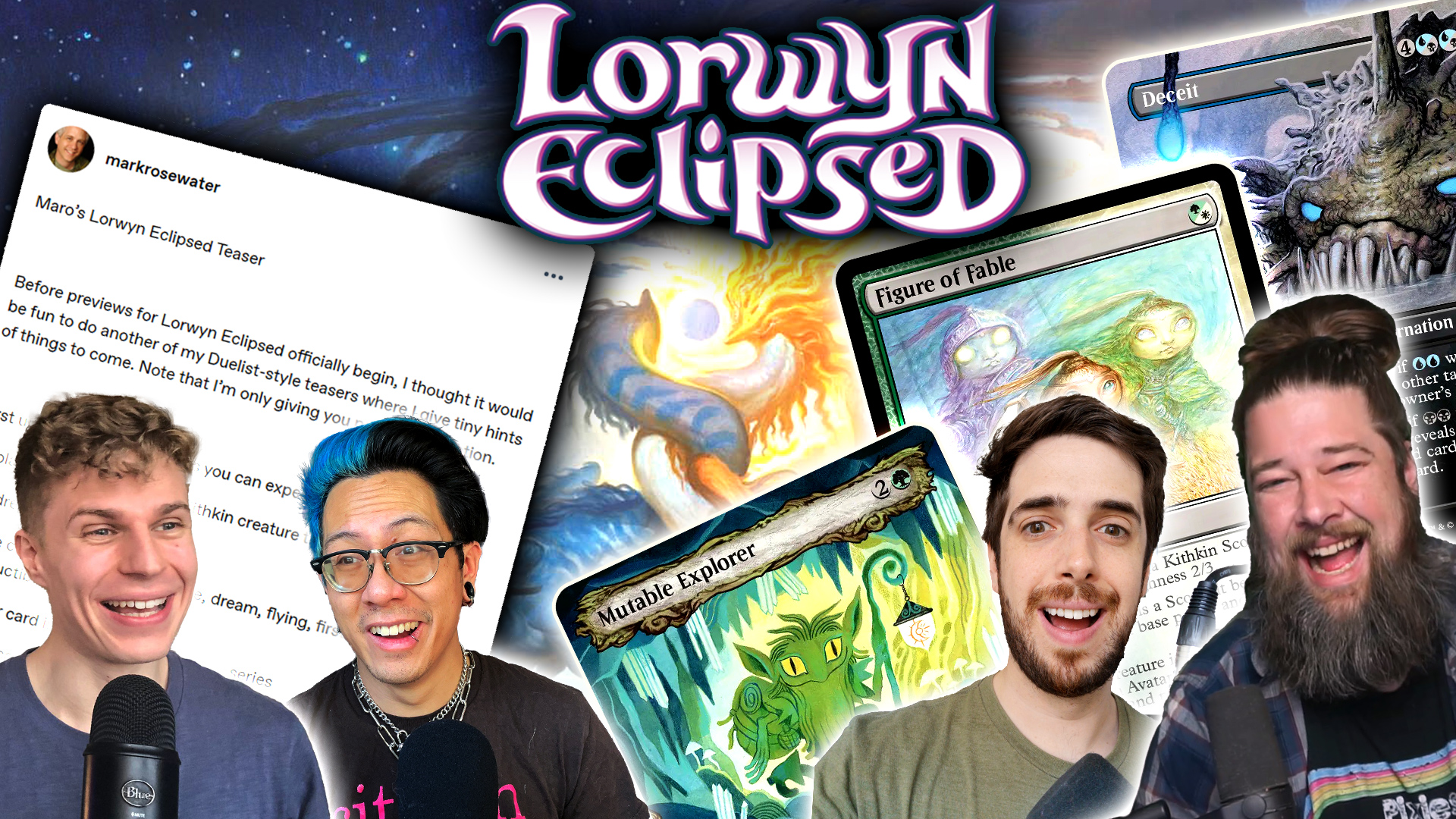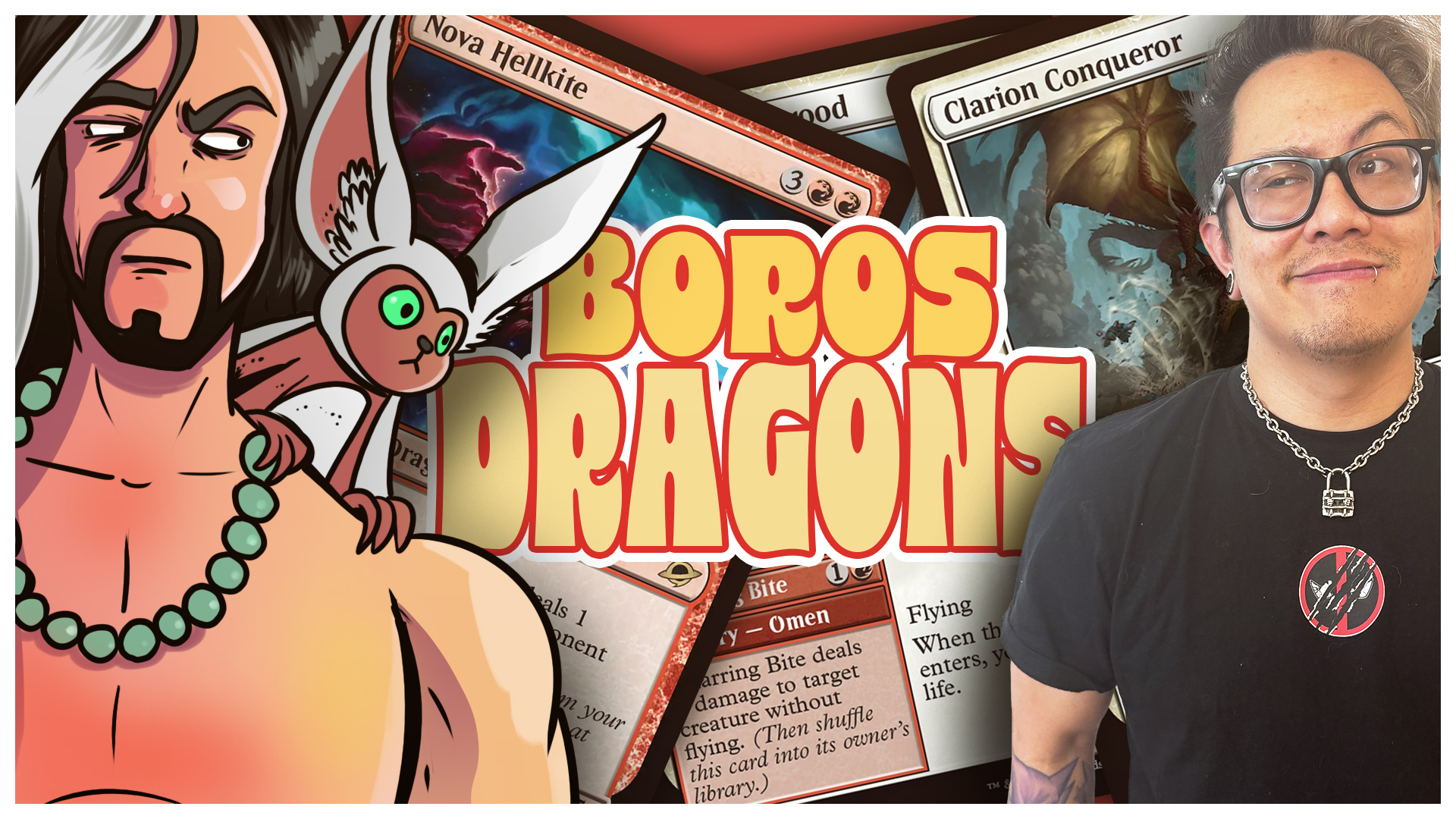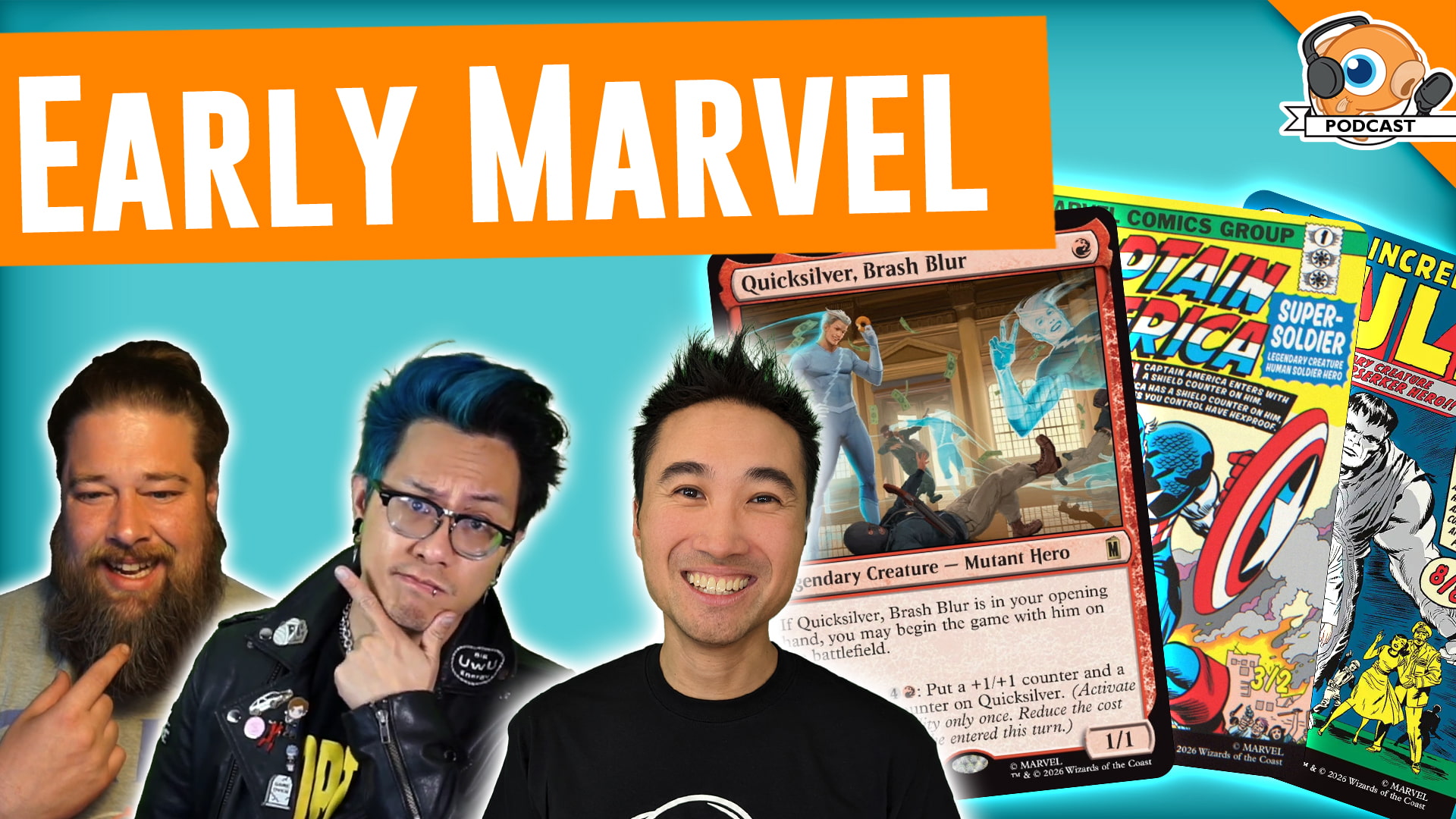Vintage 101: Introduction
My name is Joe Fiorini (Islandswamp on Magic Online). Some of you may know me from my previous Vintage/Legacy series, The Eternal Spotlight. For those of you that do not, I am an eternal format player, and I play mainly Vintage on Magic Online. I've been given an opportunity to write about Vintage for MTGGoldfish, and I'm excited to share my love of slinging broken spells! I think the best place to start is at the beginning, so here we are:
![Black Lotus [LEA]](http://cdn1.mtggoldfish.com/images/gf/Black%2BLotus%2B%255BLEA%255D.jpg)
The Crown Jewel of any Magic collection.
Many of today's Magic players weren't playing Magic in the early 1990's, like I was, and the story of how Vintage was created may not be common knowledge. For this reason I would like to discuss some history of how the format first came to be. First of all, when competitive Magic began there was only one way to play a tournament. That is, all cards printed up to that point were tournament legal. Before 1995, it wasn't a big deal since there were not that many sets. Realizing more and more expansions would be released, Wizards made the decision to create two tournament formats. These were named "Type One" and "Type Two." Type Two is what we now know as "Standard," This format consists of only the most recently printed cards. Type One allows cards from all sets ever printed. Eventually Type One was given its current name, Vintage.
Vintage is different from all other formats in one defining aspect; it has a restricted list. Cards in Vintage are not banned for reasons of power level, instead they are restricted to one card per deck. Cards are only banned in Vintage if they involve the now-defunct "ante rule," use dexterity as a mechanic, or unequivocally impede the flow of tournament play (Shahrazad).
![Shahrazad [ARN]](http://cdn1.mtggoldfish.com/images/gf/Shahrazad%2B%255BARN%255D.jpg)
![Chaos Orb [LEA]](http://cdn1.mtggoldfish.com/images/gf/Chaos%2BOrb%2B%255BLEA%255D.jpg)
![Falling Star [LEG]](http://cdn1.mtggoldfish.com/images/gf/Falling%2BStar%2B%255BLEG%255D.jpg)
![Demonic Attorney [LEA]](http://cdn1.mtggoldfish.com/images/gf/Demonic%2BAttorney%2B%255BLEA%255D.jpg)
There's a reason they don't make cards like that anymore...
For a long time Vintage was considered inaccessible by many people. Just like the other eternal format, Legacy, many of the staple cards were very expensive. Luckily for us, Wizards gave us a gift in June of 2014. Vintage Masters was released on Magic Online. With it came all of the super-rare cards that make Vintage the unique format that it is. These super-rare cards are commonly referred to as the Power Nine: Time Walk, Ancestral Recall, Timetwister, Black Lotus, and the five "Moxen" (Mox Jet, Mox Ruby, Mox Pearl, Mox Sapphire, and Mox Emerald). Each of these cards were discontinued and never printed again after Unlimited Edition in 1993.
Vintage is a format where some of the oldest, most powerful cards get played alonside some of the newest, hottest cards in the game. It's not uncommon to see someone cast a Jace, Vryn's Prodigy with a Black Lotus, and cards like Monastery Mentor have an insanely high power level. Vintage is an incredibly deep, skill-testing format, and there's a lot more to it than flashy turn-one wins.
Even though I've been playing Magic off and on for twenty years, I used to share some of the common misconceptions about Vintage. Once I started playing Vintage competitively I realized I was wrong. Here's a couple of myths I'd like to dispel:
Myth: Vintage is a turn-one format!
This is completely false. Vintage games can end on turn one, but it is extremely rare. Many times a turn-one win requires a specific combination of restricted cards AND an opponent with no disruption. Most decks in Vintage have a plan on how to beat fast combo decks, and most decks aren't even capable of winning that fast.
The restricted list and high power-level of those cards can lead to swingy games, but it's also part of the fun. I can honestly say I've won many a games with a flurry of action on the turn before I would have lost, and I've lost games with 20 Elemental tokens on the battlefield. The plethora of exciting plays are what makes Vintage the unique experience that it is.
Myth: Vintage is nothing but broken spells, nobody plays creatures!
If you've been playing competitive Magic for any length of time, you've probably noticed that Wizards has been raising the power level of creatures for some time now. Many of these powerful creatures have made their way into Vintage. Everything from token-generating creatures like Young Pyromancer and Monastery Mentor, to utility creatures like Deathrite Shaman and Snapcaster Mage, see play in Vintage. These days if you don't have a solid plan to deal with creatures, you're going to lose. Lightning Bolt and Swords to Plowshares have never been as popular in the format as they are today.
Myth: I can't afford Vintage and it's too complicated!
The perceived expense of the Power Nine and other Vintage-only cards was initially a deterrent to me, and I wasn't sure about whether to invest in the format. While it did take me awhile to obtain a Vintage deck on Magic Online, it's much easier than you think. The cost of format staples is at an all-time low, and the more expensive cards can go in multiple decks. Once you have Power, Force of Will, and your mana base, you're good to go. You won't have to worry about rotation. You can play your deck until the end of time, or until your sick of it, whichever comes first.
There are also budget-friendly decks that can compete. I've seen a deck cash a Daily Event with a sub-optimal build (the player was new and had not yet purchased Black Lotus). Vintage Dredge is the cheapest top-tier deck in the format, and it is extremely powerful and consistent. In fact, Dredge won one of the biggest paper Vintage tournaments of the past year, and one copy placed in the Top Eight of this year's Vintage Championship. That's pretty impressive for a deck that costs less than a single paper Black Lotus.
Each game does involve large decision trees; that is true. It can be overwhelming at first, and that's understandable. Practice is important, as is choosing the right deck to start with. If you do take the time to learn Vintage, you'll be learning skills that are applicable to other formats as well. Most Vintage players I've met share an intense passion for the format, and they're usually eager to assist new players become acclimated.

Time Walk - by Amy Webber
So now you know what Vintage is and what it is not. Fantastic! Let's take a look at some of the major archetypes in the format.
The Five Pillars of Vintage
There is a concept in Vintage referred to as "the pillars" of the format. These pillars each represent a broad range of archetypes that often share a key card. None of these "pillars" are completely rigid or set in stone. A deck can be loosely classified as belonging to one pillar and have cards or traits common with other pillars. Knowing what these pillars are is important for understanding the big picture. Keep in mind that they are just guidelines.
Each of the five pillars of Vintage are named after a card. They are Dark Ritual, Null Rod, Mana Drain, Bazaar of Baghdad, and Mishra's Workshop.
Dark Ritual-Based Storm Combo

The most noteworthy deck in this pillar would be TPS, The Perfect Storm. TPS uses Rituals (Dark Ritual and Cabal Ritual) and fast artifact mana in combination with tutors (Demonic Tutor and Dark Petition) and Yawgmoth's Will to cast a lethal Tendrils of Agony. Of all the decks in Vintage, the ones found in this pillar are most likely to produce a turn-one win. In recent years TPS has declined in the metagame, but it is still a deck that has never really gone away.
Other combo decks like Mono Blue Belcher are also considered members of this pillar even though they do not generally run Dark Ritual. The common thread is fast mana and a dedicated combo finish.
Decks in this pillar are explosive and powerful, but they're notoriously difficult to pilot (especially with sub-optimal opening hands). The decks in this pillar were among first ones I tried to play, and in hindsight that probably wasn't the best choice for learning the format. Still, with practice, decks like this can produce wins from a variety of board positions.

Null Rod-Based Aggro

Dedicated aggro decks do have to fight uphill in this format, especially if they're not playing Force of Will. The classic tool these decks use to even the playing field is Null Rod. This cute, little artifact and its cousin Stoney Silence shut off opposing Moxen and Time Vaults, forcing the opponent's unfair deck to play fair.
The deck I'm featuring is Merfolk. The list is unpowered, but it was still good enough to go 5-3 in a field full of powered decks. Force of Will, Mental Misstep, and Wasteland are powerful enough to win games without the extra pomp and circumstance. There is most definitely an optimal version of this deck that would include Black Lotus, Mox Sapphire, Time Walk, and Ancestral Recall, but I think this particular deck is a good example of what can be done without those cards.
Generally speaking decks will play on-color moxen even if they are playing Null Rod or Stoney Silence. They're built in such a way that they can run efficiently with a Null Rod on the battlefield.

Blue-Based Control

The Mana Drain pillar encompasses a huge amount of decks. In my opinion, this area is where a lot of the confusion about the pillars comes from. Mana Drain itself, the most iconic of Counterspells, isn't always played in Blue-based control decks anymore. The important factors that cause a deck to be lumped in this pillar are that the deck is based in Blue and has a control element.
Some of these decks are pure control like Landstill, a control deck based on the card-drawing power of Standstill. Many other decks play less counters and run powerful cards and combos as a finisher. Decks like Fenton Oath or Grixis Thieves are Blue-based combo / control decks. These decks generally win with a creature they cheat into play, or with the Time Vault / Voltaic Key interaction that allows them to take infinite turns.

Bazaar-Based Graveyard Decks

Bazaar of Baghdad is the pillar of graveyard decks, namely Dredge. There have been other Bazzar-based graveyard decks in the past, such as decks based on the Worldgorger Dragon / Animate Dead interaction. Since Dredge is arguably the most powerful and most consistent of all these decks, it stands as the only deck of this type you're likely to see in a tournament.
Using the power of Bazaar of Baghdad, Dredge fills its graveyard with cards of the namesake keyword. These "dredgers" rapidly add more cards to the graveyard, replacing the cards drawn with Bazzar with "dredged" ones. Cards like Narcomeba can be put directly onto the battlefield this way. Others, like Bloodghast or Ichorid, can be put directly into play with a triggered or activated ability. Cabal Therapy acts as a free sacrifice outlet and a powerful form of disruption, clearing the way to potentially cast Dread Return. Bridge from Below ensures flashing back Cabal Therapy or Dread Return is a profitable venture. More often than not, the horde of zombie tokens created by Bridge from Below will be how the deck ultimately wins, although it is capable of other paths to victory.
![Bridge from Below [FUT]](http://cdn1.mtggoldfish.com/images/gf/Bridge%2Bfrom%2BBelow%2B%255BFUT%255D.jpg)
![Ichorid [TOR]](http://cdn1.mtggoldfish.com/images/gf/Ichorid%2B%255BTOR%255D.jpg)
![Golgari Grave-Troll [DDJ]](http://cdn1.mtggoldfish.com/images/gf/Golgari%2BGrave-Troll%2B%255BDDJ%255D.jpg)
In Legacy, Dredge is a good deck. In Vintage, Dredge is an insane deck that will literally beat you every time if you skimp on sideboard cards. I've been killed on turn two many times by Dredge, and turn three is even more common. No card ever printed enables the Dredge mechanic as much as Bazaar of Baghdad, and it's so powerful that Vintage Dredge plays Serum Powder just to find it.
The deck I've chosen to highlight is not a typical Dredge list. It is sometimes referred to as "Pitch Dredge'' due to its inclusion of Force of Will. A strength of this deck is it deals with graveyard hate by ignoring it with a transformational sideboard. Look closely and you'll see that in games two and three, this deck often switches into a Dark Depths deck and kills you with a 20/20 Marit Lage token. This particular build shows up a lot on Magic Online, and it's important you know what it is. Dark Depths will make your Graffdigger's Cage look pretty silly.

Workshop-Based Prison Decks

If you've played Modern or Legacy, you're likely familiar with the "Tron Lands" (e.g. Urza's Tower) or the "12-Post" mana base that revolves around Cloudpost. In Vintage we have something similar, and it too has its own deck built around it. Mishra's Workshop is the single most powerful and consistent land that produces tons of mana. The only caveat is that Mishra's Workshop makes mana that can only be spent on artifacts. This text is not really a drawback since these decks are almost entirely artifacts anyway.
Workshop decks use their namesake land in combination with the "Sol-Lands" (Ancient Tomb or City of Traitors) to cast artifacts that take away their opponent's ability to cast spells. Cards like Sphere of Resistance, Trinisphere, and Thorn of Amethyst make each spell cost more mana to play. This "tax" is a symmetrical effect of course, but Workshop decks ignore this fact due to the massive amounts of mana they generate. Mana-taxing artifacts and cards used to stop the opponent from playing anything are commonly referred to as "lock pieces". Beyond these lock pieces Workshop decks play Strip Mine, Wasteland, and sometimes even Rishadan Port or Ghost Quarter.
Decks based on Mishra's Workshop have few true comparisons in other formats. The closest would be Legacy MUD, which is generally fairly close to Kuldotha Forgemaster-based Workshop builds. Legacy MUD is powerful, but without four Mishra's Workshops it isn't nearly as potent as its Vintage cousin.
Decks in this pillar are thought of as "prison decks." A prison deck is much like a control deck, except it seeks to control the game preemptively by creating and maintaining a superior board position. Normal control decks want to counter everything. A prison deck wants to stop you from even casting anything. Some Workshop decks are classified as Workshop Aggro, but that just means they run more aggressive creatures like Hangarback Walker, Arcbound Ravager, or Wurmcoil Engine. All of these decks play varying amounts of lock-pieces.
![Lodestone Golem [MM2]](http://cdn1.mtggoldfish.com/images/gf/Lodestone%2BGolem%2B%255BMM2%255D.jpg)
A turn-one Golem is pretty scary...
Mishra's Workshop decks are relatively easy to learn, but difficult to master. These decks are even more powerful on the play, and they have some hands that are just plain hard to beat. Correct sequencing often means the difference between a win and a loss, and it is in this area where being an experienced player really makes a difference. If you choose to play a deck like this keep in mind that it takes a lot of work to become a true expert with the archetype. Workshops masters like 2004 Vintage Champion Roland Chang have elevated playing Workshops to an artform. It does not happen overnight.


Now you know how Vintage came to be what it is today. You've seen the five pillars of the format, and a deck from each one. If I've piqued your interest (I hope I have!), you'll want to research which deck will be your first. Next week I'll go over a few decks that might be a good fit for getting started. If you'd like to see some of these decks in action, check out the Vintage Super League (VSL). Randy Beuhler has a YouTube channel with archived footage of the past seasons. The Vintage Super League features some of the best Vintage players in the world and cross-format pros like Luis Scott Vargas and Eric Froelich.
If you're interested in getting into Vintage, or you're just a player who wants to test some games, you can always message me on Magic Online (Islandswamp). Or you can hit me up on Twitter @josephfiorinijr. Thanks for reading. I hope to see some new faces in the Vintage queues!













